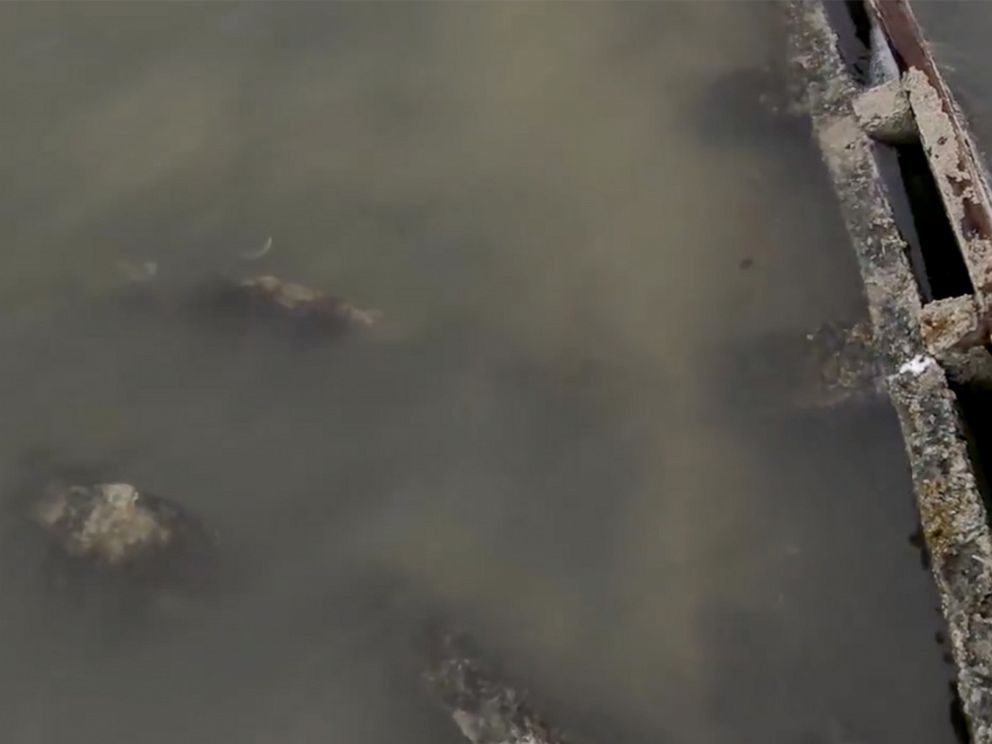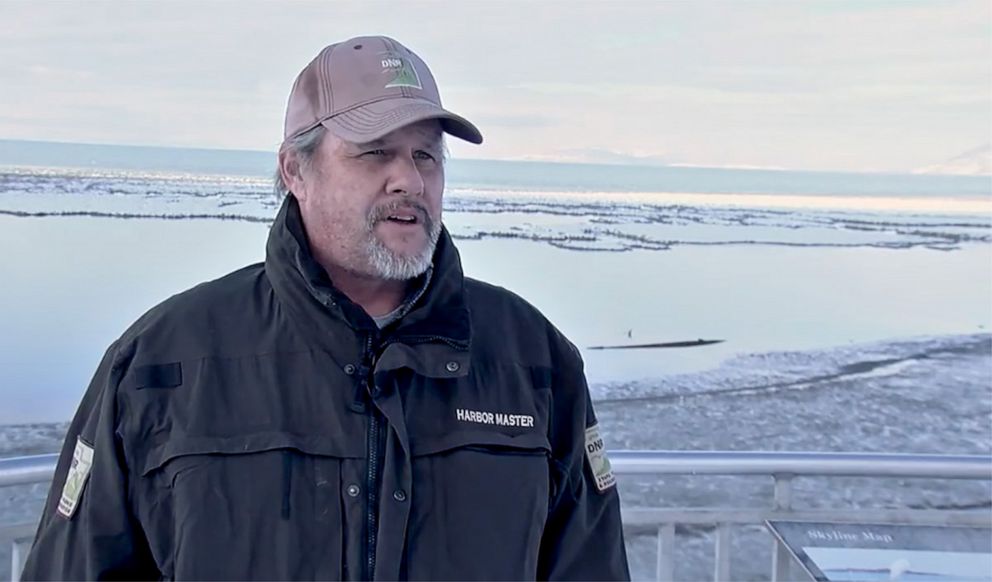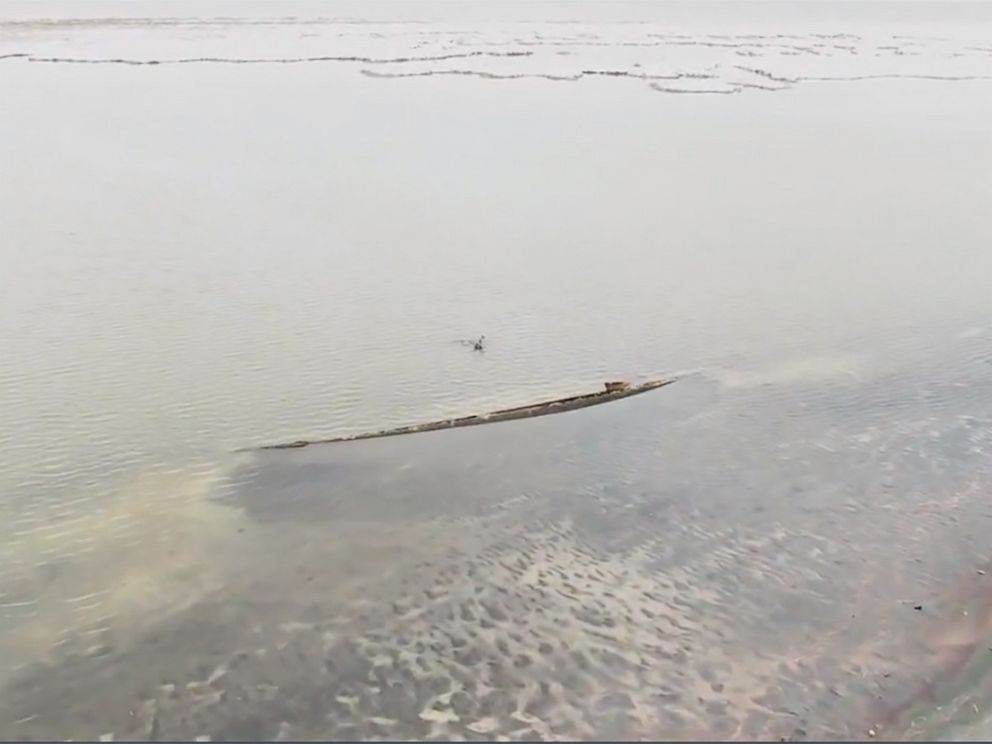The W.E. Marsh No. 4 first set sail on the lake in 1902.
ByMeredith Deliso
December 16, 2022

Great Salt Lake dry-up causing dangerous climate ripple effect, ecologists say
ABC News’ Kayna Whitworth reports on Utah’s Great Salt Lake drying up and slowly shrinking, causing concern for wildlife...
The shrinking of Utah's Great Salt Lake is revealing history that's been hidden below the surface for decades.
The wreckage of a ship that first set sail on the Great Salt Lake 120 years ago can now be observed as the water body, known to be the largest saltwater lake in the Western Hemisphere, reaches historic lows.
MORE: Great Salt Lake dry-up causing dangerous climate ripple effect, ecologists say
The Great Salt Lake is believed to have dozens of shipwrecks dating back at last 150 years, some of which have resurfaced after storms or during low water levels.
"There's a rich history out here," Great Salt Lake State Park Manager Dave Shearer told ABC Salt Lake City affiliate KTVX. "There's a lot of wrecks out here on the Great Salt Lake that have started to surface and it's really interesting to go out there and see them."

The remains of the W.E. Marsh No. 4, a 120-year-old boat, are visible in Utah's Great Salt Lake Park.
KTVX

The remains of the W.E. Marsh No. 4, a 120-year-old boat, are visible in Utah's Great Salt Lake Park.
KTVX
Wreckage believed to be of the W.E. Marsh No. 4 was discovered by happenstance near the lake's marina in 2014 using side-scan sonar, while a state park crew was searching for a keel that had fallen off a sailboat, according to the Salt Lake Tribune.
In recent years, the shipwreck could be seen submerged on a sunny day with clear water.
Now, the remains of the 40-foot boat can be seen partially submerged in the lake.
"It's leaning over on its side and you're seeing the starboard side of the hull and you can see the whole hull," Shearer told KTVX.

Great Salt Lake Park Manager Dave Shearer.
KTVX
The W.E. Marsh No. 4 was part of the Southern Pacific Railroad fleet to help construct the Lucin Cutoff, a railroad line that once featured a 12-mile-long trestle bridge across the Great Salt Lake that was built in the early 20th century.
It was one of the first boats that came out on the lake in 1902 to build the trestle, according to Shearer, and was used to ferry people back and forth to the work site.
The boat also was used for dredging before eventually being donated to the Sea Scouts, according to Shearer.

The remains of the W.E. Marsh No. 4, a 120-year-old boat, are visible in Utah's Great Salt Lake Park.
KTVX
The ship was last seen afloat in 1936, according to the Utah Department of Natural Resources.
"It's very exciting to see a piece of history there that people can come out and see, but it's also sad that the lake is this low, that we've got trouble out here -- problems," Shearer told KTVX.
The Great Salt Lake has shrunk to record lows in recent years due to a megadrought and rising temperatures. By 2017, the lake had lost half of its water since the first settler arrived in 1847, according to a study published in Nature Geoscience. It is now one-third of its original capacity and has reached unsustainable levels, researchers told PBS in October.
As other bodies of water across North America have been drying up to due drought and a decrease in precipitation, they've also recently uncovered several surprises.
MORE: Bodies of water all over North America are drying up due to drought, climate change: Experts
Receding waters along the Mississippi River in October revealed a ferry that likely sunk in the late 1800s or early 1900s near Baton Rouge and Civil War relics near Memphis.
Among the more grim discoveries, human remains from five people were recovered on dried-up sections of Lake Mead amid a historic drought this year.
ABC News' Julia Jacobo contributed to this report.
No comments:
Post a Comment